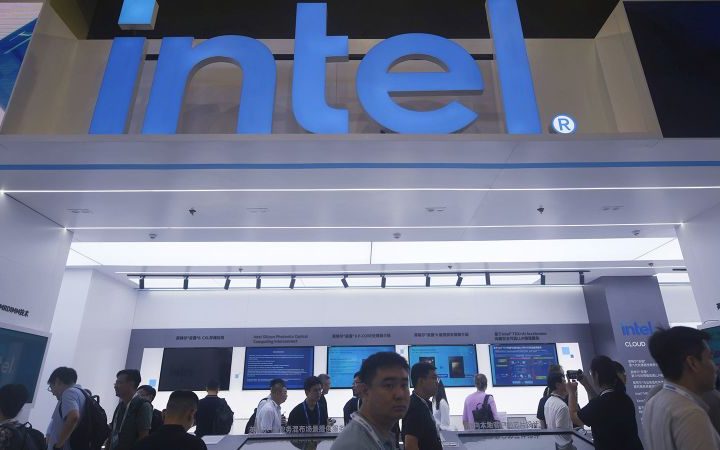A worrisome sign for the Federal Reserve is starting to emerge.
The Fed keeps a close eye on several risks that could make its job of taming inflation even more difficult, such as red-hot consumer demand keeping some upward pressure on prices and the possible effects of geopolitical tensions in the Middle East on oil prices.
But the US central bank also pays close attention to whether Americans still have faith inflation will eventually return to normal. That faith seems to be eroding.
The University of Michigan’s latest consumer survey released Friday showed that Americans’ long-run inflation expectations rose to 3.2% this month, the highest level since 2011.
And those perceptions could continue to get worse the longer it takes the Fed get inflation back to its 2% target. Fed officials don’t expect inflation to reach 2% until 2026, according to their latest economic projections released in September.
If there’s one thing that would make the Fed quake in its boots, it would be worsening inflation expectations.
“If we find that consumers or businesses are really starting to feel like that long-term level of inflation … is creeping up, if that’s their expectation, we’ve got to act and we’ve got to get that under control,” Atlanta Fed President Raphael Bostic told Bloomberg earlier this month.
If Americans lose faith that inflation can ever return to normal that would prompt the Fed to tighten monetary policy even more — either by raising interest rates or keeping them elevated for much longer than expected.
The Fed’s benchmark lending rate is currently at a 22-year high and investors already expect the central bank to keep rates higher for longer.
“I worked at the Fed for six years and if inflation expectations are drifting higher and they’re not under control, the Fed absolutely will act,” Luke Tilley, chief economist at Wilmington Trust Investment Advisors, told CNN.
“That is the one thing that gives them trouble sleeping at night. They don’t lose sleep over recessions because they come and go, but they do lose sleep over long-term inflation expectations drifting higher,” he said.
It’s unclear if inflation expectations will continue to worsen, and the Fed looks at a broad range of surveys, not just the University of Michigan’s. But the university’s survey is one of the most closely watched by investors and economists.
The Fed specifically focuses on long-run inflation expectations and Fed Chair Jerome Powell makes it a point to mention the state of Americans’ inflation perceptions at every news conference after officials set monetary policy (which happens eight times a year.)
During his most recent post-meeting presser earlier this month after officials voted to hold rates steady, Powell said “longer-term inflation expectations appear to remain well anchored.”
But the clock is ticking, inflation remains well above 2% and some economists believe the last mile of the Fed’s inflation fight might be the most difficult.
“I remain willing to support raising the federal funds rate at a future meeting should the incoming data indicate that progress on inflation has stalled or is insufficient to bring inflation down to 2% in a timely way,” Fed Governor Michelle Bowman, one the Fed’s most hawkish officials, said last week at a New York Bankers Association forum in Palm Beach, Florida.
The keyword there is “timely.”
Sticky inflation could possibly “un-anchor” inflation expectations or elicit a consistent deterioration in Americans’ perception on inflation. But it’s unclear how long it would take for persistently high inflation to cause that.
Tilley said “the Fed is being way too pessimistic” in expecting inflation not to reach 2% until 2026.
At the end of the day, the Fed just needs to maintain confidence that the inflation monster will someday go away, and inflation’s steady slowdown over the past year has so far helped in that regard, according to the New York Fed.
A recent analysis from the bank on consumers’ perspectives on inflation showed that “consumers today know enough about the Federal Reserve to recognize its policies as the most important factor behind the recent and expected future decline in inflation.”
The Fed perhaps just needs to continue to prove that it is making progress in its historic inflation fight.
“I think 2% is just a number because what’s more meaningful is the direction of travel rather than where they get to before the trip is over,” Drew Matus, chief market strategist at MetLife Investment Management, told CNN. “The Fed really just wants people to not expect inflation will run at 4% forever.”
So what’s kept inflation expectations in check this long? Matus said it might just be nostalgia.
“People want to believe the future will be like the good old past because it’s something that the brain can get itself around,” he said. “They’re trying to actualize their memory when things were more affordable and what the Fed really has to watch out for is the risk of a shock to inflation right now.”
If you are someone who likes to plan ahead on your taxes, the IRS this week released the new inflation-adjusted income tax brackets and standard deduction amounts that will be in effect for tax year 2024.
Translation: These are the numbers that will be relevant to the tax return most Americans will file in early 2025, my colleague Jeanne Sahadi reports.
The IRS makes inflation adjustments annually to tax brackets, the standard deduction and some other tax breaks.
For individuals and married people filing separately, the new federal standard deduction will increase to $14,600, up from $13,850 this year.
For married couples filing jointly, the standard deduction will rise to $29,200, up from $27,700 currently.
And for people who file as head of household, the standard deduction will be $21,900, up from $20,800 today.
Most filers claim the standard deduction. Others will itemize their deductions because taken together, they add up to more than the standard deduction.
For example, if you are a single filer and your mortgage interest, charitable contributions and allowable portion of your state and local incomes taxes come to more than $14,600 in 2024, you likely would itemize your deductions to save more on your taxes.
Monday: Earnings from Tyson Foods. Fed Governor Lisa Cook delivers remarks.
Tuesday: Earnings from Home Depot. The US Labor Department releases its Consumer Price Index for October. Fed officials Phillip Jefferson, Michael Barr, Loretta Mester, and Austan Goolsbee deliver remarks. The National Federation of Independent Business releases its Small Business Optimism Index for October. China’s National Bureau of Statistics releases October data on industrial production, retail sales, fixed-asset investment and its unemployment rate for that month.
Wednesday: Earnings from Target. The UK’s Office for National Statistics releases October inflation data. The US Labor Department releases its Producer Price Index for October. The US Commerce Department releases October retail sales figures. Fed Vice Chair for Supervision Michael Barr delivers remarks.
Thursday: Earnings from Walmart, Macy’s and Gap. The US Labor Department reports the number of initial jobless claims in the week ended November 11, along with export and import prices in October. The Federal Reserve releases October figures on industrial production. The National Association of Home Builders releases its Housing Market Index for November. Fed officials Lisa Cook, Michael Barr, Loretta Mester, John Williams and Christopher Waller deliver remarks.
Friday: The US Commerce Department releases October data on housing starts and building permits. San Francisco Fed President Mary Daly delivers remarks.
Read the full article here







